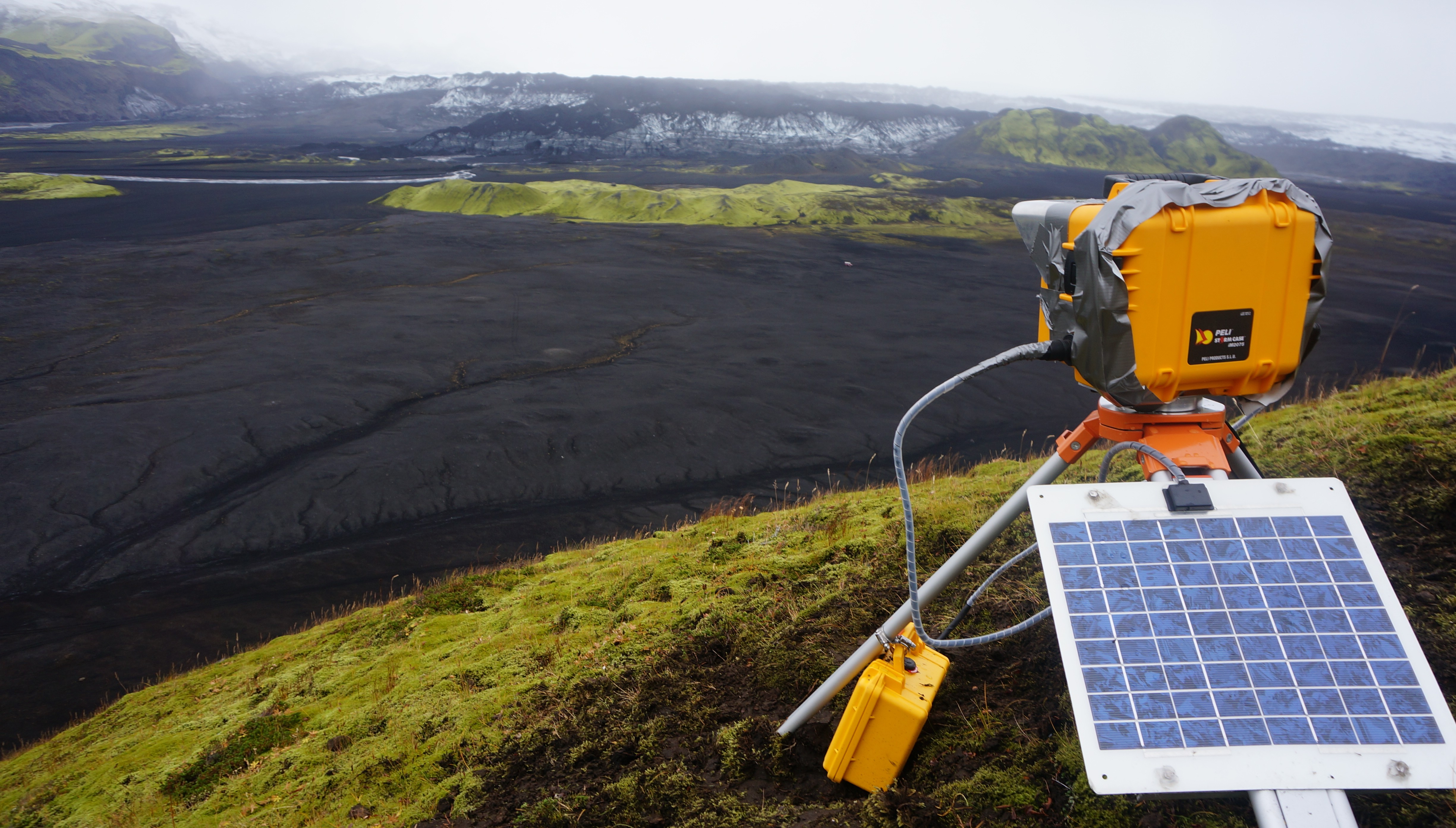PhD update: October 2015
Returning from Svalbard and installing time-lapse cameras in Iceland
This month has been varied. I started the beginning of October with my last couple of days in Svalbard, which I largely spent de-stressing following from my teaching days at UNIS. I didn’t rest for too long though as after returning from Svalbard, an opportunity opened up to further our work in Iceland and install two time-lapse cameras at Höfðabrekkujökull.
We have been looking for this opportunity since the start of this year, with the intention to use these cameras to monitor glacio-volcanic activity. The major aim of the project is to document the next eruption of Katla, a volcano which lies beneath the Mýrdalsjökull ice cap. Of course, this may not happen for while! So the short-term aims are to examine the influence of debris (from the previous eruption of Katla in 1918) on Höfðabrekkujökull and also observe changes in the proglacial geomorphology (Mýrdalssandur).

One of our time-lapse cameras on Hafursey. The abundance of gaffa tape is to ensure that no water enters the box through the door seal (October 2015).
In total, I spent 4 days in Iceland with my supervisor. Using Selfoss as a base, we had the University of Edinburgh’s Land Rover to travel to and from Höfðabrekkujökull. We identified two suitable sites for the cameras on Hafursey, a rocky outcrop opposite Höfðabrekkujökull that provided good views over the sandur plain, the debris-covered glacier, and further up the ice cap. The weather wasn’t ideal though, with rain and snow prevailing all day during the installations. The tripods on which the camera boxes are attached were simple enough to dig into the ground, but the rain was difficult to contend with when handling the electronics and programming the cameras. We were particularly concerned about whether the seal around the door to the camera box would be watertight during such intense rainfall events. We exercised one of the glaciology mantras that has been passed down from generation to generation - if in doubt, use gaffa tape. It may not look pretty, but it’ll do the job. The cameras are programmed to take one photo every 6 minutes, collecting high-frequency images for one year until the memory cards fill up. So fingers crossed that when we return next year, we will have images from the whole year.
After returning from Iceland, I finally settled down to work at my desk like a normal PhD student (it’s been a while!) This has largely a lot of data management, having not had much time previously to consolidate all the time-lapse images collected from Tunabreen (August 2015) and Kronebreen (September 2015) into appropriate files and film sequences with time signatures. Next month I hope to really look at nailing down the methods to quantify surface velocities from the images… wishful thinking maybe? But now I have settled back down in Edinburgh, I am much more hopeful than I have previously been!
